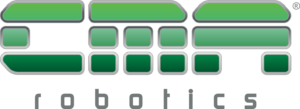Industrial paint robots
Manufacturing is moving towards automating its processes with robots, and one area is the robotic finishing of products. In collaboration with the manufacturer CMA Robotics Systems, we offer paint robots for the following industries:
- vehicle finishing-
- metal colouring by both liquid and powder painting methods
- wood finishing (finishing of assembly parts as well as whole products).
- plastic coating
- for the ceramics sector
Systems can be built from scratch to a specific specification, with the necessary finishing techniques - be it. 2K/3K system or automatic colour change a solution, or to improve/integrate an existing system.
What is certain is that the subsequent benefits of automation far exceed the costs of the investment, both directly and indirectly, and there are already plenty of examples of this in industry today.
Even if you've done the maths yourself and can't afford robotic manufacturing, contact us and let's review today's opportunities in a rapidly evolving industrial sector.
The main reasons for robotisation are:
- Labour and productivity
The cost of automation and robotics technology is no longer as expensive as one might think, and is decreasing every year. Acquisition costs may still seem high, but automation increases productivity while reducing costs in the years of production that follow.
A single robot is capable of working three shifts and seven days a week without a break, allowing significant savings on labour costs, which are the biggest source of cost for companies today.
- Quality
In order to remain competitive, manufacturing companies cannot afford to allow fluctuations in product quality, especially in the final phase of production when it comes to painting. With each robot purchased, companies can improve quality by standardising process parameters and paint gun movements. Properly tuned robots provide consistent high quality regardless of the time of day, the day of the week or the mood of the moment.
- Raw materials
Thanks to the high accuracy of the robots, it is possible to reduce paint consumption in automation to somewhere around 30%. Using a multi-component dispenser (e.g. a Graco ProMix series production), which mixes the dyes in the vicinity of the gun, even greater raw material savings and higher productivity can be achieved.
- Modern software
Today's paint robot technology makes widespread use of 2D and 3D scanners to detect product shapes and geometry points. The systems are so advanced that there is no need to write additional software. The paint robot already automatically generates a program using detection algorithms and predefined painting methods.For example, such systems can be used successfully in window and door painting lines.
- Occupational health and the distribution of job roles
In the paint industry, coating processes involving chemicals that are toxic and explosive to humans are widespread. The use of robots in such environments is the only way to minimise the health risks to workers. Most painting robots are IP67 rated and have ATEX certification. The robot housings are fully hermetic thanks to PTFE and EPDM seals.
Robots take over repetitive tasks, reducing the risk of accidents and job dissatisfaction. Robots allow skilled workers to focus on more complex and decision-making tasks.
- In flexible
Robots can be easily and quickly reprogrammed for new jobs. The robot is the ideal student. Record the robot's movements the first time you paint and you're done. So it doesn't matter if you have bigger or smaller batches, the robot can do it! What's more, once the program has been saved, it can be immediately applied to repeat orders.
The robots always have remote maintenance support, where a service technician can help the customer to monitor and configure the robot's programs or other parameters.
